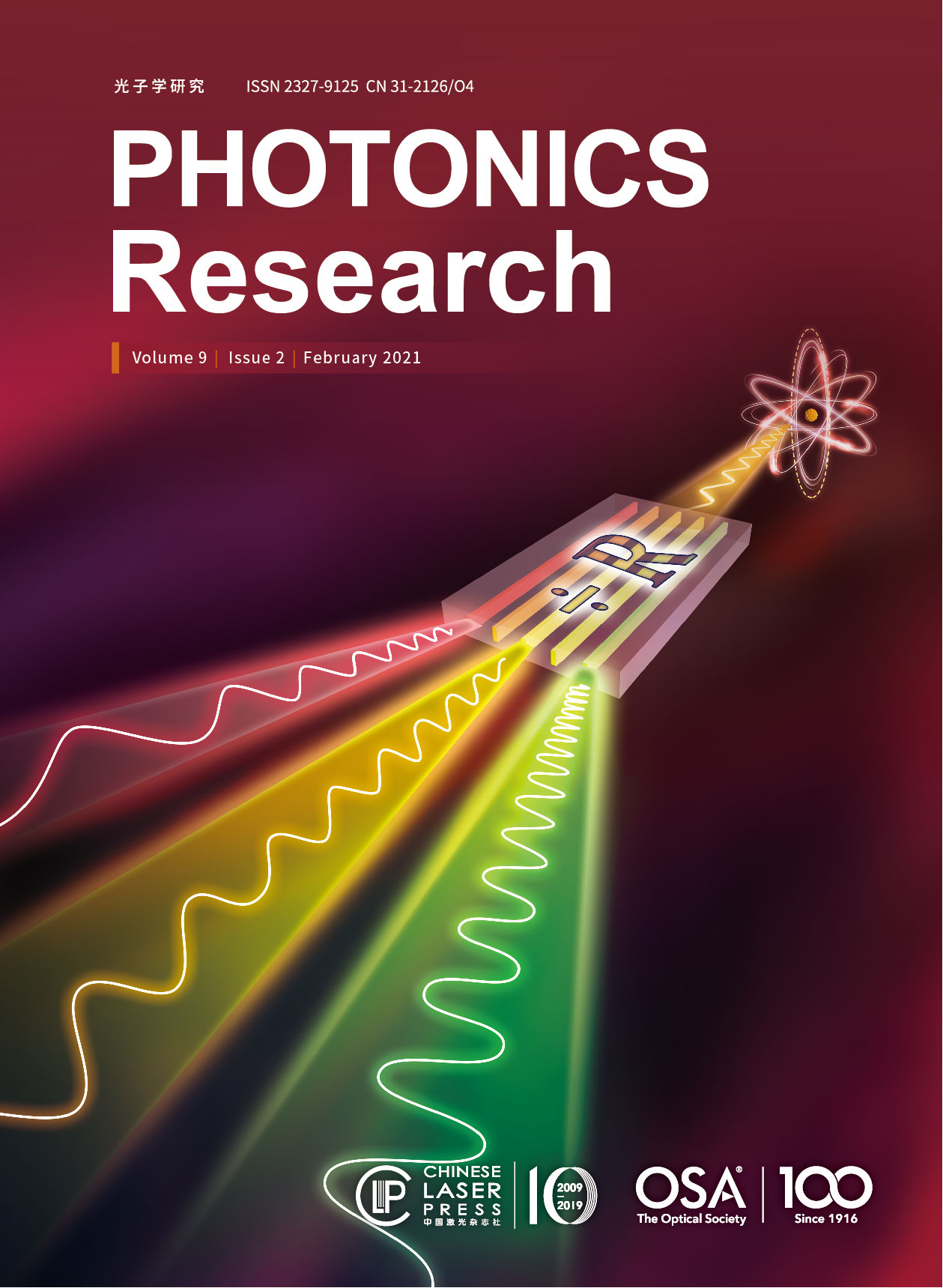We propose a plug-and-play (PnP) method that uses deep-learning-based denoisers as regularization priors for spectral snapshot compressive imaging (SCI). Our method is efficient in terms of reconstruction quality and speed trade-off, and flexible enough to be ready to use for different compressive coding mechanisms. We demonstrate the efficiency and flexibility in both simulations and five different spectral SCI systems and show that the proposed deep PnP prior could achieve state-of-the-art results with a simple plug-in based on the optimization framework. This paves the way for capturing and recovering multi- or hyperspectral information in one snapshot, which might inspire intriguing applications in remote sensing, biomedical science, and material science. Our code is available at:
- Publication Date: Jan. 21, 2021
- Vol. 9, Issue 2, B18 (2021)
Compressed ultrafast photography (CUP) is the fastest single-shot passive ultrafast optical imaging technique, which has shown to be a powerful tool in recording self-luminous or non-repeatable ultrafast phenomena. However, the low fidelity of image reconstruction based on the conventional augmented-Lagrangian (AL) and two-step iterative shrinkage/thresholding (TwIST) algorithms greatly prevents practical applications of CUP, especially for those ultrafast phenomena that need high spatial resolution. Here, we develop a novel AL and deep-learning (DL) hybrid (i.e.,
- Publication Date: Jan. 21, 2021
- Vol. 9, Issue 2, B30 (2021)
We demonstrate a smart sensor for label-free multicomponent chemical analysis using a single label-free ring resonator to acquire the entire resonant spectrum of the mixture and a neural network model to predict the composition for multicomponent analysis. The smart sensor shows a high prediction accuracy with a low root-mean-squared error ranging only from 0.13 to 2.28 mg/mL. The predicted concentrations of each component in the testing dataset almost all fall within the 95% prediction bands. With its simple label-free detection strategy and high accuracy, the smart sensor promises great potential for multicomponent analysis applications in many fields.
.- Publication Date: Jan. 21, 2021
- Vol. 9, Issue 2, B38 (2021)
A high-dimensional quantum key distribution (QKD), which adopts degrees of freedom of the orbital angular momentum (OAM) states, is beneficial to realize secure and high-speed QKD. However, the helical phase of a vortex beam that carries OAM is sensitive to the atmospheric turbulence and easily distorted. In this paper, an adaptive compensation method using deep learning technology is developed to improve the performance of OAM-encoded QKD schemes. A convolutional neural network model is first trained to learn the mapping relationship of intensity profiles of inputs and the turbulent phase, and such mapping is used as feedback to control a spatial light modulator to generate a phase screen to correct the distorted vortex beam. Then an OAM-encoded QKD scheme with the capability of real-time phase correction is designed, in which the compensation module only needs to extract the intensity distributions of the Gaussian probe beam and thus ensures that the information encoded on OAM states would not be eavesdropped. The results show that our method can efficiently improve the mode purity of the encoded OAM states and extend the secure distance for the involved QKD protocols in the free-space channel, which is not limited to any specific QKD protocol.
.- Publication Date: Jan. 13, 2021
- Vol. 9, Issue 2, B9 (2021)
- Publication Date: Jan. 25, 2021
- Vol. 9, Issue 2, 151 (2021)
- Publication Date: Jan. 14, 2021
- Vol. 9, Issue 2, 106 (2021)
- Publication Date: Jan. 13, 2021
- Vol. 9, Issue 2, 98 (2021)
- Publication Date: Jan. 26, 2021
- Vol. 9, Issue 2, 202 (2021)
- Publication Date: Feb. 01, 2021
- Vol. 9, Issue 2, 243 (2021)
- Publication Date: Jan. 26, 2021
- Vol. 9, Issue 2, 181 (2021)
- Publication Date: Jan. 27, 2021
- Vol. 9, Issue 2, 229 (2021)
- Publication Date: Feb. 01, 2021
- Vol. 9, Issue 2, 266 (2021)
- Publication Date: Jan. 26, 2021
- Vol. 9, Issue 2, 142 (2021)
- Publication Date: Jan. 26, 2021
- Vol. 9, Issue 2, 131 (2021)
- Publication Date: Jan. 26, 2021
- Vol. 9, Issue 2, 187 (2021)
- Publication Date: Jan. 26, 2021
- Vol. 9, Issue 2, 213 (2021)
- Publication Date: Jan. 25, 2021
- Vol. 9, Issue 2, 171 (2021)
- Publication Date: Jan. 13, 2021
- Vol. 9, Issue 2, 88 (2021)
- Publication Date: Jan. 21, 2021
- Vol. 9, Issue 2, 116 (2021)
- Publication Date: Jan. 21, 2021
- Vol. 9, Issue 2, 125 (2021)
- Publication Date: Jan. 27, 2021
- Vol. 9, Issue 2, 237 (2021)
- Publication Date: Jan. 26, 2021
- Vol. 9, Issue 2, 222 (2021)
- Publication Date: Feb. 01, 2021
- Vol. 9, Issue 2, 259 (2021)
- Publication Date: Jan. 26, 2021
- Vol. 9, Issue 2, 193 (2021)
- Publication Date: Feb. 01, 2021
- Vol. 9, Issue 2, 252 (2021)
















